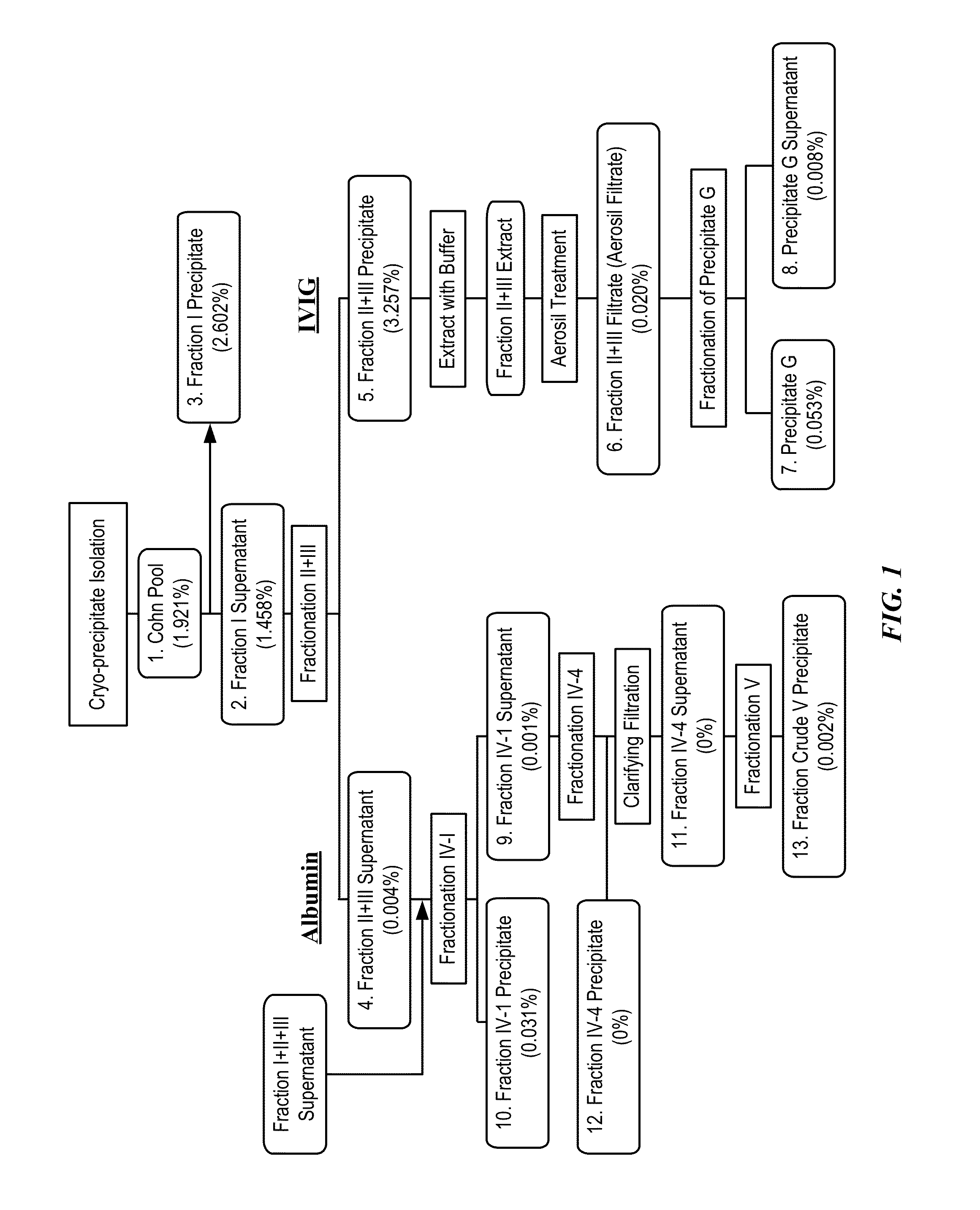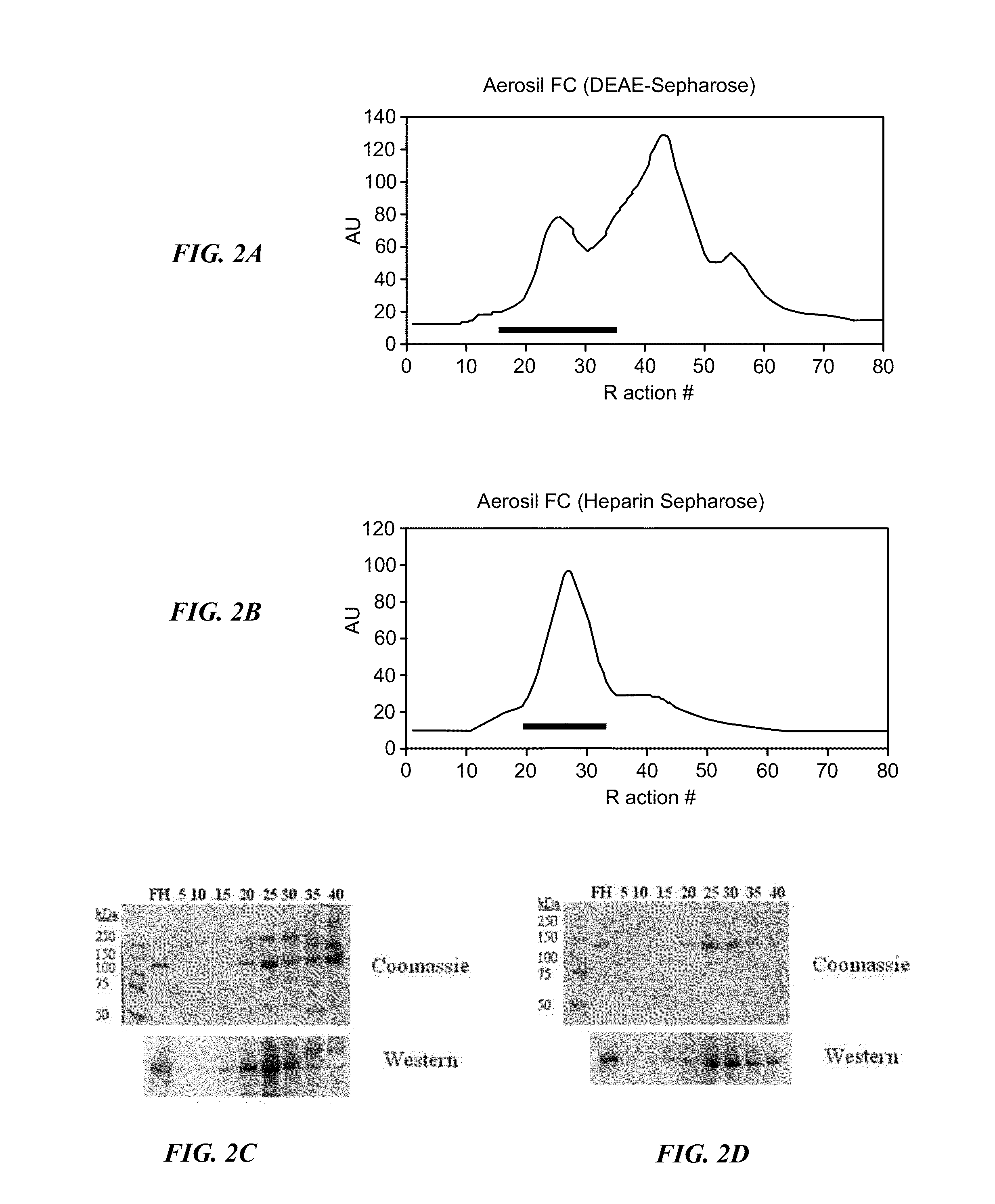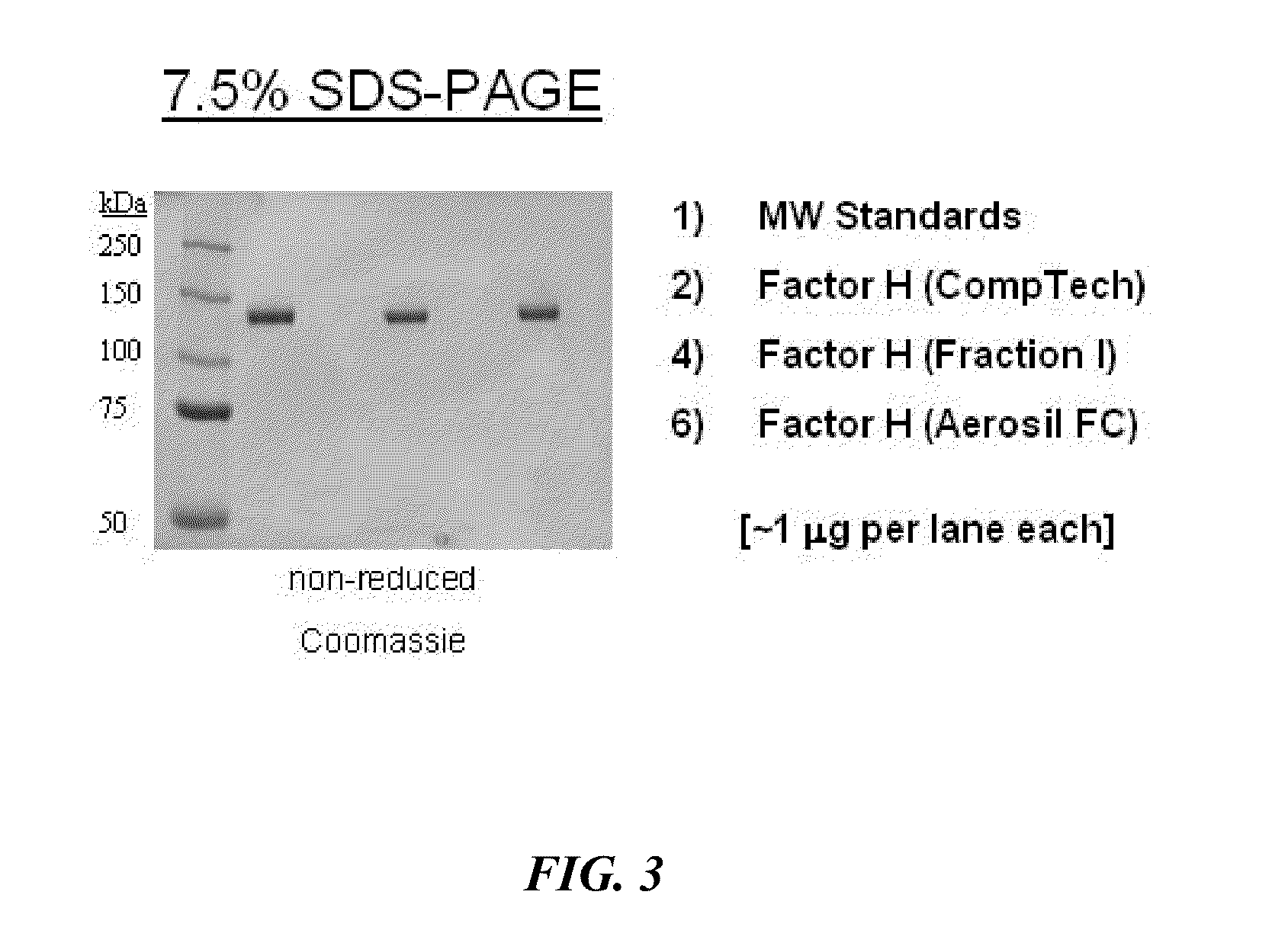Manufacture of factor h (FH) and fh-derivatives from plasma
a technology of factor h and plasma, which is applied in the field of plasma plasma production, can solve the problems of limited commercially available blood products, inability to increase the supply of these products, and shortage of raw human plasma for the manufactur
- Summary
- Abstract
- Description
- Claims
- Application Information
AI Technical Summary
Benefits of technology
Problems solved by technology
Method used
Image
Examples
example 1
[0303]To determine an economically beneficial scheme for the manufacture of Factor H from a plasma sample, which allows for the recovery of additional blood factors from the same plasma sample, a 3000 L lot of pooled human plasma was subjected to industrial fractionation according to the scheme outlined in the flow-diagram shown in FIG. 1. The fate of Factor H in the industrial fractionation process was followed by ELISA using an antibody specific for the full-length variant of Factor H. The amount of Factor H determined to be in each fraction is provided in Table 1 and is summarized graphically in FIG. 4.
TABLE 1Relative amounts of Factor H found in each of the majorfractions of an industrial scale plasma fractionation.Ppt %ProteinTotal FactorLiquidSolidProteinFactor H% ofwt / wtHFractionLkgmg / mLμg / mLTotalCorrection*kgCohn Pool321050.1663.31.3232.13Fraction I Sup348045.2592.91.3122.06Fraction I Ppt41.14.1107.72.6020.170.18Fraction II +38800.004III SupFraction II +124.521.26893.2570.43...
example 2
[0305]The present example describes experiments performed to determine the feasibility of extracting Factor H from a Fraction II+III filter cake. Briefly, the Fraction II+III filter cake from the plasma fractionation performed in Example 1 was dissolved in a Factor H extraction buffer (25 mM Tris (pH 8.0); 5 mM EDTA; 200 mM NaCl) at a ratio of 25:1 (mL buffer per g filter cake). The conductivity of the resulting suspension was then adjusted by diluting the solution 3:1 with low salt extraction buffer (25 mM Tris (pH 8.0); 5 mM EDTA). Un-dissolved material was cleared from the suspension by centrifugation followed by filtration through a 0.45 μm filter.
[0306]The clarified filter cake suspension was then loaded onto a DEAE Sepharose™ chromatograph column equilibrated with a low salt buffer (25 mM Tris (pH 8.0); 5 mM EDTA; 50 mM NaCl). A linear gradient from 50 mM NaCl to 500 mM NaCl (25 mM Tris (pH 8.0); 5 mM EDTA; NaCl) was then used to elute the Factor H from the DEAE Sepharose™ col...
example 3
[0308]The present example describes experiments performed to determine the feasibility of extracting Factor H from a Fraction I precipitate. Briefly, the Fraction I precipitate from the plasma fractionation performed in Example 1 was dissolved in a Factor H extraction buffer (25 mM Tris; 5 mM EDTA; 200 mM NaCl; pH 8.0) at a ratio of 25:1 (mL buffer per g filter cake). The conductivity of the resulting suspension was then adjusted by diluting the solution 3:1 with low salt extraction buffer (25 mM Tris (pH 8.0); 5 mM EDTA). Un-dissolved material was cleared from the suspension by centrifugation followed by filtration through a 0.45 μm filter.
[0309]The clarified Fraction I precipitate suspension was then loaded onto a DEAE Sepharose™ chromatograph column equilibrated with a low salt buffer (25 mM Tris (pH 8.0); 5 mM EDTA; 50 mM NaCl). A linear gradient from 50 mM NaCl to 500 mM NaCl (25 mM Tris (pH 8.0); 5 mM EDTA; NaCl) was then used to elute the Factor H from the DEAE Sepharose™ col...
PUM
 Login to View More
Login to View More Abstract
Description
Claims
Application Information
 Login to View More
Login to View More - R&D
- Intellectual Property
- Life Sciences
- Materials
- Tech Scout
- Unparalleled Data Quality
- Higher Quality Content
- 60% Fewer Hallucinations
Browse by: Latest US Patents, China's latest patents, Technical Efficacy Thesaurus, Application Domain, Technology Topic, Popular Technical Reports.
© 2025 PatSnap. All rights reserved.Legal|Privacy policy|Modern Slavery Act Transparency Statement|Sitemap|About US| Contact US: help@patsnap.com



